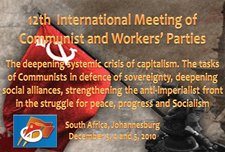
|
The Way I See It - Afghanistan Revisited Anti-Sovietism Has Never Served the Cause of Peace Don Currie, Chair Canadians for Peace and Socialism February 15, 2010 Dennis O’Keefe, co-chair of the Canadian Peace Alliance (CPA) in what was an otherwise good article attacking the double standards justifying the US-NATO illegal war in Afghanistan, couldn’t resist engaging in a little anti-Sovietism along the way.  One wonders why?  Who is the co-chair of CPA trying to impress?  His remarks have been widely circulated. (Read O'Keefe Article) Those of us who support CPA, including the members of CPS assert that anti-Sovietism was and continues to be pro-war and anti-peace. During the darkest days of the cold-war when the threat of nuclear war loomed over the planet, the Soviet Union was the main force of restraint over the worst of the US imperialist reactionary forces thirsting for war.
It is beyond the scope of these comments to re-visit in detail that historical period especially as it played out in Canada. That will be done in the fullness of time. There are many lessons to be learned from how the internal security forces in Canada used anti-communism and anti-Sovietism to destroy movements for peace in our country. US-British imperialist objectives in Central Asia are the same today as they were when US imperialism was arming the anti-Soviet war lords in the late 1970’s, the same discredited group that surrounds the Karzai administration today. It is useful to restate the facts of the history of the conflict, some of which the CPA itself has documented on its website. Afghanistan Revisited Afghanistan emerged from a feudal state late in its development. Most people were semi-literate. Literacy today is about 40%. Tribal society was roughly divided among Tajiks, Uzbeks, and Turkmen in the North and the Pushtans in the South. The Pushtan traditional territory straddles Southern Afghanistan and Pakistan while the Tajiks, Uzbeks and Turkmen populations inhabit the North. Afghanistan shares a large western border with Iran, a large south and eastern border with Pakistan a large northern border with the former Soviet Republics of Turkmenistan, Uzbekistan and Tajikistan. It shares a small border with China in the North.
The country is 90% Muslim with both Sunni and Shiite populations. The role of the clergy, the Mullahs has been significant and of long standing and can’t be trivialized or ignored. (One is well advised to find an objective appraisal of the rise of Islam to correctly situate the religious influences in this struggle. We are currently reading “Islam - History, Faith and Politics – The Complete Introduction” by Paul Grieve. There are many such works but one is advised to get a recent work that includes contemporary politics.) The simplistic notion that religious influence was always reactionary is not entirely true. Clergy often played a progressive role in the struggle against foreign intervention and for independence. However on balance the influence of the clergy at the highest level, as it is in all religions, has been used to keep believers enthralled and in an oppressed state and beholden to one or another type of oppression, in the case of Afghanistan it is feudal war lords. The modern history of Afghanistan, that is the colonial era, can be broken into four periods. 1. The colonial period of the 1800’s to outbreak of the 1st World War. From 1839 to 1919 Britain conducted 3 wars of aggression against Afghanistan and was beaten each time. British forces were forced to withdraw militarily but due to bribery of some war-lords maintained influence over Afghan foreign policy. Britain never recognized Afghan independence and treated Afghanistan as a protectorate. British imperialism divided the country territorially (the Durand Line) and artificially split many traditional tribes and people’s to better control and influence them and subordinate them to British ambitions in the area. The struggle of Afghans against Britain for independence and territorial unity characterized the internal politics of the country for eight decades. 2. 1917 Bolshevik Revolution to end of Second World War.
All British policy during this period was aimed at disrupting friendly relations between Soviet Russia and Afghanistan. Britain sent expeditionary forces into the Soviet border republics of Tajikistan, Uzbekistan and Turkmenistan to support White Guard forces. The Red Army defeated them and the treaty of friendship and cooperation ensued. Trade and economic relations followed. RSFSR allowed goods to flow into Afghanistan from Soviet Russia and Europe duty free. Later, Afghanistan rebuffed attempts of Hitler to use Afghanistan as a base of attack on Soviet Russia during Second World War. Afghan neutrality was appreciated by Soviet Union. Friendship and cooperation characterized Afghan Soviet relations after war. Soviet Afghanistan friendship was historically based in mutual experience. To suggest that the Soviet Union intervened in 1980 out of imperial ambition is a CIA fiction. Â 3. Post Cold War up to and including April 1978 Revolution and Soviet intervention until the Soviet withdrawal in 1989. The United States emerged from the Second World War as the leading imperialist power and replaced Britain as the main imperialist influence in Central Asia. In 1955 the United States organized the Baghdad Pact (CENTO) an alliance of Asian and Middle Eastern Nations directed against the Soviet Union. CENTO later collapsed as the democratic revolutionary forces in the region developed. Learning nothing, the US persisted in efforts to establish bases in Afghanistan on the boarders of the Soviet Union. It was rebuffed by Afghanistan. At the same time democratic revolutions were breaking out across Asia and Africa and the Middle East. The Afghan masses saw an alternative to the poverty and underdevelopment of their country.
Counter revolutionary forces were the old privileged elite, mainly upper echelon civil servants, land owners and reactionary clergy. They carried out the murder of women and patriots and revolutionaries long before the Taliban were heard of. These feudal forces with ties to the CIA worked to overthrow the people’s democratic regime.
The Democratic Republic of Afghanistan was recognized by the United Nations and majority of the countries of the world. The success of the communist led popular revolution alarmed the US ruling elite who were especially irked at growing friendship between Afghanistan and Soviet Union. Their dreams of forward military bases in the region were fading.
The US military wanted to wreck SALT 2 talks and derail détente. CENTO had
collapsed. The US had concluded a Treaty with Pakistan and established a NATO
base in Turkey armed with nuclear rockets aimed at Soviet Union. The US was
smarting at being rebuffed in its attempt to establish military bases on
Afghanistan’s territory.
The US financed the training of counter-revolutionary forces in Pakistan and backed the Mujahadeen, a reactionary coalition of former privileged classes, reactionary clergy, and war lords, the same war lords who today are prominent in the Karzai Government. The Mujahadeen began military operations against the government. They resorted to terror. Their crimes were not less than that of the Taliban. They killed teachers, murdered women, spread terror and destroyed collective and co-operative enterprises established with Soviet assistance. After repeated requests for help from the Afghan government the Soviet Union intervened militarily in Afghanistan under terms of Soviet Treaty of Friendship, Good Neighborliness and Cooperation. The intervention fully conformed to article 51 of the United Nations Charter. During this period, Pakistan, which was embroiled in a dispute with India over Kashmir, used US funds and military equipment to train the orphans and displaced youth from Afghanistan’s war, and its own unemployed youth to form the Taliban as a shock force directed to overthrow the Democratic Republic of Afghanistan. The US encouraged the rise of the Taliban and its participation in the hostilities.
Despite the Soviet withdrawal, the Democratic Republic of Afghanistan continued under the leadership of President Najibullah. The Najibullah regime was the last progressive government in Afghanistan. The highly trained and US-Chinese equipped Taliban, inspired by reactionary religious fervour, overthrew the Najibullah regime, murdering Najibullah and his brother who at the time were under the protection of the United Nations Headquarters in Kabul. The Taliban installed a fanatical Islamic state, dismantled all of the reforms of the revolution, returned the country to the most despotic form of feudal rule and oppression. Its cruelty towards women outraged the whole world. 4. Post September 11, 2001.
The current situation in Afghanistan is the outgrowth of two centuries of British and US imperialist intervention and rivalry with other colonial powers for dominance and control of Asia. It is a fiction to suggest that the Soviet Union coveted Afghanistan or had any imperial designs on its people or its territory. Nothing in the history of that region can support such a shop worn and discredited anti-communist canard. It does not serve the cause of peace to repeat it. The resistance of the people’s of Asia to foreign imperialist intervention has been the main factor determining the politics of the region and the resulting wars, interventions, occupations and revolutions. The struggles of the people in Central Asia and specifically the people of Afghanistan cannot be understood in isolation from the long history of imperialist intervention in the entire region. The canard that the Afghan people are yearning for western imperialist help to free them from the grip of indigenous despotic Muslim oppressors and it is the destiny of enlightened western imperialist powers led by the United States and supported by its NATO allies including Canada to “free” them, is the modern version of the medieval crusades mentality. It is made worse by the attempts of US propaganda to convince Canadian and US citizens that war, high tech war, directed somewhat indiscriminately against both civilian and military targets is the only means of “freeing” the Afghan people.
What the Afghan people are saying and what we in the peace movement are saying is that war is not the answer to the desire of the Afghan people to take the road of economic progress, social development, enlightenment and freedom. That is why we advocate a complete military withdrawal from the country as the first step to end the atrocities of war currently inflicted by the US and NATO forces. The war option is a disaster for all.
Obama continues the essential US imperialist policy in the region. The current brutal offensive in Helmand Province in the course of which civilians once again are being brutally killed is the proof. The strategic aims of the United States are not about helping the Afghan people. The US strategic aim is to control access to the vast oil reserves of the Caspian and the natural gas reserves of the former Soviet Republics. The US global strategy is to establish permanent forward rapid deployment bases in the region to counter the growing influence of Russia, China and India. The region now has six nuclear powers involved in the region. The danger of a wider and possibly nuclear war is real. Prime Minister Harper endorses the US strategic goals and at the request of NATO has committed Canadian armed forces to the most hostile and dangerous areas of the country. The conflict has no military solution. The danger of Canada becoming bogged down in a long and bloody conflict with rising casualties is real and has alarmed Canadian public opinion. There is scepticism and lack of support for the Government policy and it remains a major unresolved question for Canadians, the majority of whom continue to oppose the war. Undoubtedly Afghanistan will be a major issue in the next federal election. There is nothing in either the Canadian or US policy that indicates they are considering withdrawal anytime soon.
The fact is that war means profits. Defence expenditures are rising. Military suppliers are getting rich. The attempt of the Harper Government to convince Canadians that there is no profit motive in perpetuating the war will sooner or later become an issue here as it has in the United States. I believe this latter point must become a key argument to be used by the peace movement in demanding an end to the war. It is not sustainable, not winnable and unjustified. Unity among the forces for peace is based on our common belief that war is not the answer. Sterile and discredited anti-Sovietism has no place in that effort. |

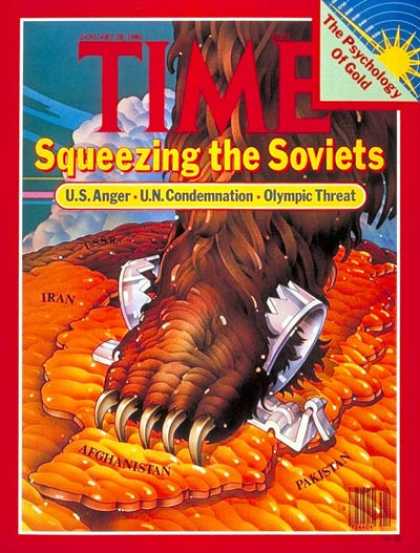 The
equating of the Soviet intervention in Afghanistan in 1980 with the current
US-Canadian-NATO aggression flows from the discredited anti-communist “Two Super
Power Theory” that was used by the enemies of peace during the cold war to split
the peace movement. It did great harm.
The
equating of the Soviet intervention in Afghanistan in 1980 with the current
US-Canadian-NATO aggression flows from the discredited anti-communist “Two Super
Power Theory” that was used by the enemies of peace during the cold war to split
the peace movement. It did great harm. 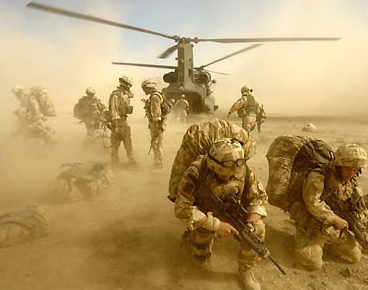 Afghanistan
throughout the two centuries of British intervention remained economically
backward, dependent on animal husbandry and agriculture some light manufacturing
and of late the cultivation of poppies used in the production of opium. The
latter has served to criminalize the economy with the approval if not outright
collusion of US and NATO occupation forces.
Afghanistan
throughout the two centuries of British intervention remained economically
backward, dependent on animal husbandry and agriculture some light manufacturing
and of late the cultivation of poppies used in the production of opium. The
latter has served to criminalize the economy with the approval if not outright
collusion of US and NATO occupation forces. 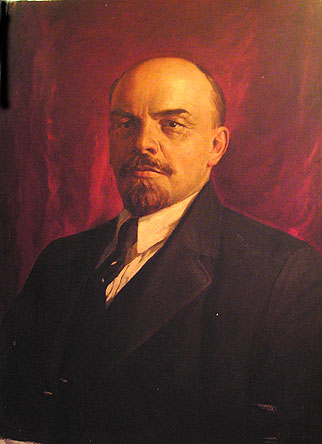 Lenin,
representing the Russian Socialist Federative Soviet Republic (RSFSR) the
forerunner of the Soviet Union (1919) was the first country in world to
recognize the national independence of Afghanistan. The Soviet government signed
a Treaty of Friendship and provided aid when Soviet Union was itself in need. In
international meetings it insisted that Afghanistan’s national independence and
respect for its territory be included in Brest Litovsk Treaty that resulted in
Russia withdrawing from WW1.Â
Lenin,
representing the Russian Socialist Federative Soviet Republic (RSFSR) the
forerunner of the Soviet Union (1919) was the first country in world to
recognize the national independence of Afghanistan. The Soviet government signed
a Treaty of Friendship and provided aid when Soviet Union was itself in need. In
international meetings it insisted that Afghanistan’s national independence and
respect for its territory be included in Brest Litovsk Treaty that resulted in
Russia withdrawing from WW1. 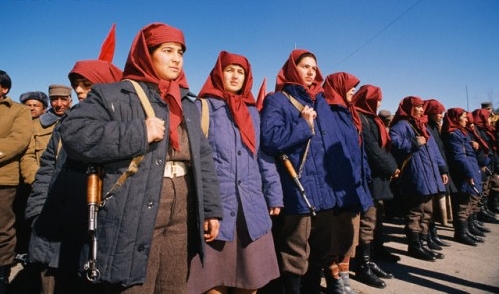 In
1978 national democratic forces overthrew the reactionary Mohammad Duad regime.
The Afghan Revolution was national democratic in nature (not socialist), led by
Communists but with wide support from clergy, peasants, intellectuals and a
small working class (only 50,000). The economic and social program of the Noor
Mohammad Taraki regime and Babrak Karmal aimed to develop the economy, overcome
illiteracy, build new mosques, expand trade and modernize agriculture. The
Revolution attracted the support of women who wanted education and freedom. The
foreign policy was based on non-alignment, neutrality and peace. The Government
was a member state of the United Nations.
In
1978 national democratic forces overthrew the reactionary Mohammad Duad regime.
The Afghan Revolution was national democratic in nature (not socialist), led by
Communists but with wide support from clergy, peasants, intellectuals and a
small working class (only 50,000). The economic and social program of the Noor
Mohammad Taraki regime and Babrak Karmal aimed to develop the economy, overcome
illiteracy, build new mosques, expand trade and modernize agriculture. The
Revolution attracted the support of women who wanted education and freedom. The
foreign policy was based on non-alignment, neutrality and peace. The Government
was a member state of the United Nations.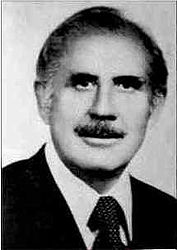 Prime
Minister Taraki (a communist) was assassinated by a CIA stooge Hafizullah Amin.Â
Amin, posing as a communist attempted to discredit the revolution by conducting
a regime of terror and jailed intellectuals and pro-revolutionary clergy. The
democratic Revolution was in danger of being overthrown. Babrak Karmal, Taraki’s
second in command backed by revolutionary forces in the army and clergy and
youth overthrew Amin in 1979 and re-established a people’s democratic government
and began to implement the progressive program begun by Taraki.
Prime
Minister Taraki (a communist) was assassinated by a CIA stooge Hafizullah Amin.Â
Amin, posing as a communist attempted to discredit the revolution by conducting
a regime of terror and jailed intellectuals and pro-revolutionary clergy. The
democratic Revolution was in danger of being overthrown. Babrak Karmal, Taraki’s
second in command backed by revolutionary forces in the army and clergy and
youth overthrew Amin in 1979 and re-established a people’s democratic government
and began to implement the progressive program begun by Taraki. 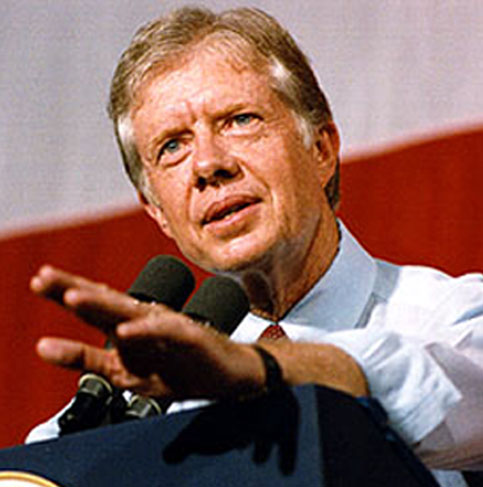 The
US Carter administration caved into CIA pressure and opted for a policy to
de-stabilize and overthrow the progressive Afghan government. The US Government
began to arm the insurgents with high tech weapons.
The
US Carter administration caved into CIA pressure and opted for a policy to
de-stabilize and overthrow the progressive Afghan government. The US Government
began to arm the insurgents with high tech weapons. 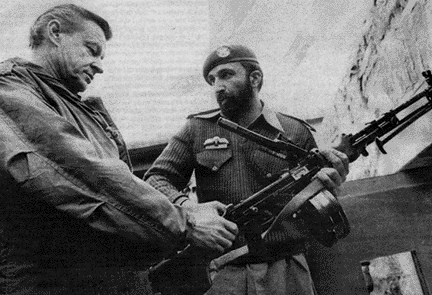 The
combined forces of reaction and war weariness among the Soviet people and its
drain on the Soviet economy compelled the Soviet Union to withdraw from
Afghanistan in 1989. The war needn’t have gone on as long as it did. The Soviet
Government, headed by President Andropov sent a message to President Reagan in
1983 offering to withdraw all Soviet forces within six months if the US would
cease arming the Mujahadeen. Reagan refused the offer and continued to arm the
Mujahadeen with Stingray shoulder rockets and other high tech weaponry.
The
combined forces of reaction and war weariness among the Soviet people and its
drain on the Soviet economy compelled the Soviet Union to withdraw from
Afghanistan in 1989. The war needn’t have gone on as long as it did. The Soviet
Government, headed by President Andropov sent a message to President Reagan in
1983 offering to withdraw all Soviet forces within six months if the US would
cease arming the Mujahadeen. Reagan refused the offer and continued to arm the
Mujahadeen with Stingray shoulder rockets and other high tech weaponry.
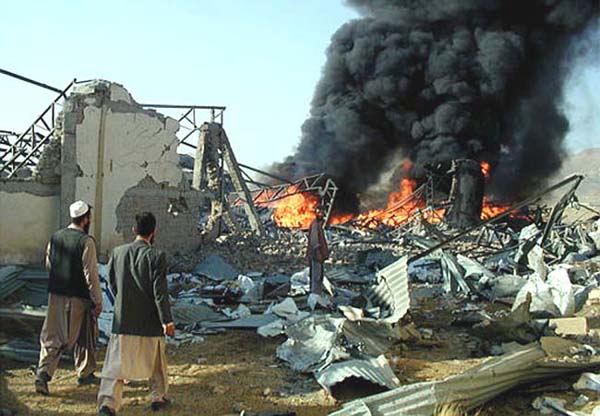 Following
the terrorist suicide attacks on New York and Washington, the work of Saudi
Arabian Wahabi fanatics, the Bush administration determined to use the event as
the pretext to invade Iraq. The US cobbled together an alliance of nations
ostensibly to “defeat terrorism.” Because it was alleged that Al Queda and its
leader Osama Bin Laden was using Afghanistan as a base of operations the US
attacked Kabul, already devastated by war, and bombed it to total ruin,
inflicting vast destruction and hundreds of civilian casualties. It is ironic
that Bush then claimed to be interested in rebuilding the devastation he
created.
Following
the terrorist suicide attacks on New York and Washington, the work of Saudi
Arabian Wahabi fanatics, the Bush administration determined to use the event as
the pretext to invade Iraq. The US cobbled together an alliance of nations
ostensibly to “defeat terrorism.” Because it was alleged that Al Queda and its
leader Osama Bin Laden was using Afghanistan as a base of operations the US
attacked Kabul, already devastated by war, and bombed it to total ruin,
inflicting vast destruction and hundreds of civilian casualties. It is ironic
that Bush then claimed to be interested in rebuilding the devastation he
created.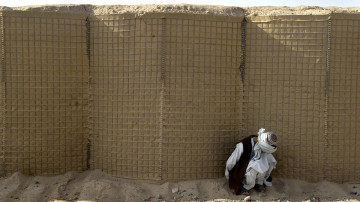 Whenever
the Afghan people have had the chance to speak directly to the world and not
through the filter of the corporate media, it has always been to say, they have
had enough of war in all of its variants and that a US NATO war inflicted with
increasing ferocity on their lives, homes and infrastructure is not preferable
to some other kind of war.
Whenever
the Afghan people have had the chance to speak directly to the world and not
through the filter of the corporate media, it has always been to say, they have
had enough of war in all of its variants and that a US NATO war inflicted with
increasing ferocity on their lives, homes and infrastructure is not preferable
to some other kind of war. 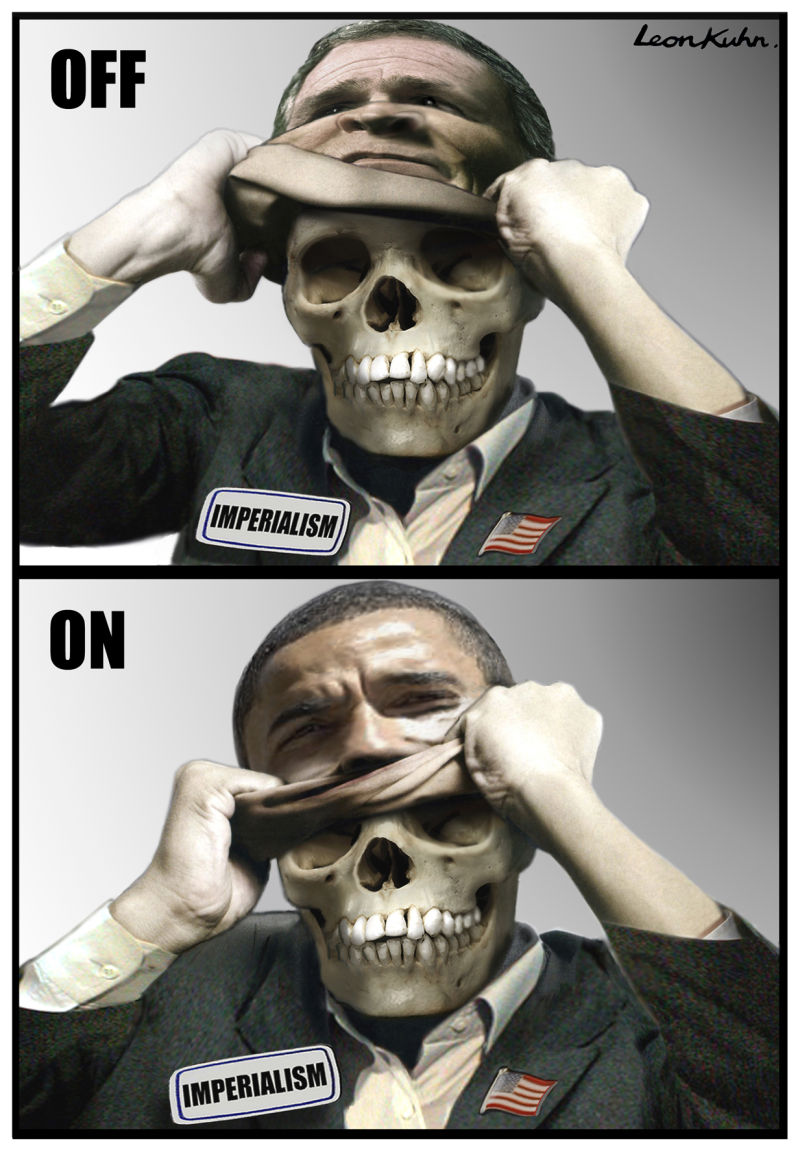 The
current war in Afghanistan is in fact another front of the US war in Iraq. It
cannot be separated from the US imperialist policy of regime change, and the use
by the US of military power as the first option in its drive for domination and
control of the entire region of Central Asia. The US has drawn up plans for
another four years in Iraq. This time under the watch of President Obama who
came to power promising to end the war.
The
current war in Afghanistan is in fact another front of the US war in Iraq. It
cannot be separated from the US imperialist policy of regime change, and the use
by the US of military power as the first option in its drive for domination and
control of the entire region of Central Asia. The US has drawn up plans for
another four years in Iraq. This time under the watch of President Obama who
came to power promising to end the war. 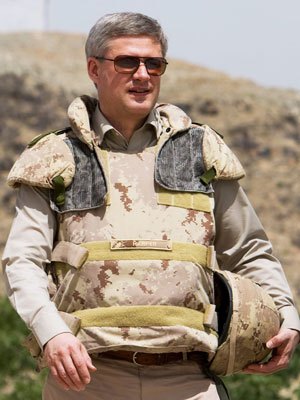 Public
resistance to the war is also fuelled by the rising cost of the war. The
perpetuating of the war means vast amounts of federal funds desperately needed
to support Canada’s social support systems, to overcome poverty to address
crumbling urban infrastructure and to implement a program to clean up the
environment and combat green house gas emissions are lagging because we are at
war.
Public
resistance to the war is also fuelled by the rising cost of the war. The
perpetuating of the war means vast amounts of federal funds desperately needed
to support Canada’s social support systems, to overcome poverty to address
crumbling urban infrastructure and to implement a program to clean up the
environment and combat green house gas emissions are lagging because we are at
war.